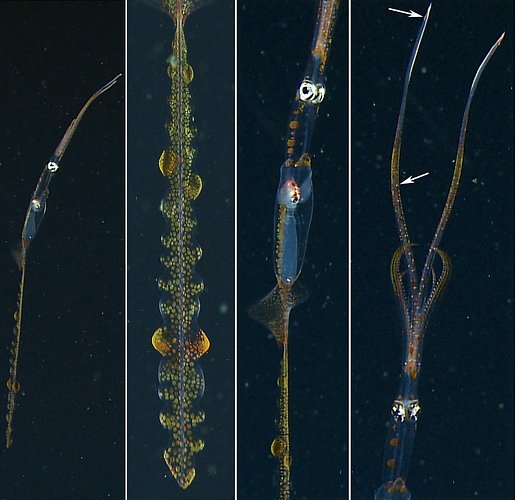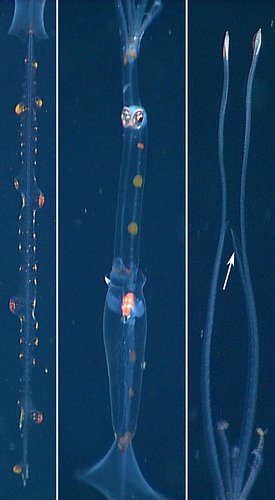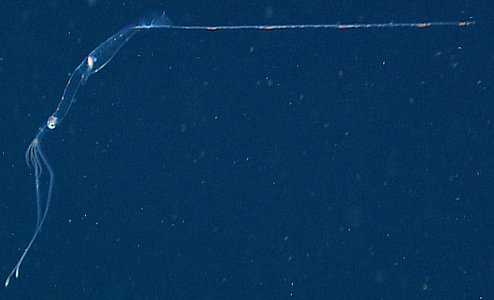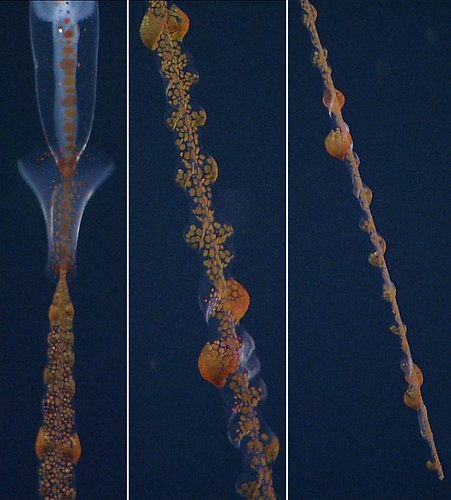TOP FIGURE. Side view of a early doratopsis of C. calyx, photographed at 252 m depth in Monterey Bay. Note the very long neck and long brachial pillar. © 2013 MBARI.
RIGHT FIGURE. - The same squid. Left - Ventral (?) view of the tail. Note the relative simple structure of the tail. Middle - Ventrolateral view of the fins, mantle head and arms. Right - Ventral view of the arms and tentacles. Note that tentacles are emerging from the tentacular sheaths of the Arms IV (arrow) just as in subadults. © 2013 MBARI.
BOTTOM FIGURE. Late doratopsis of C. calyx photographed at 520 m depth in Monterey Bay. Left two figures. Dorsolateral (left) and dorsal (right) views showing the full squid. Note the row of chromatophores on the head and mantle which align with those of the tail and arms/entacles [when held together (right photograph)]. This pigmentation emphasizes the long, slender form the the squid. Right three figures. Close-up views of portions of the same C. calyx. Left - Dorsal view of the anterior tail, the fin and the posterior mantle. Middle - Dorsolateral view of the mid-region of the tail. Right - Side view of the posterior region of the tail. Note that the tail is flat when viewed from the side and rather broad viewed dorsally. All photographs © 2013 MBARI.
A second late doratopsis of C. calyx (below) shows the great similarity in the structure of the tail between individuals.


Figure. Images of one individual C. calyx. Left - Side view of the full squid. Left-middle - Ventral view of the entire tail. Right-middle - Ventrolateral view of the anterior tail to the base of the arms. Right - Ventral view of the head and brachial crown. Note the small, brown knob near the tip of the tentacle (top arrow) which is probably the large terminal photophore of the adult club. If so, the white region distally represents the paralarval club and the white area proximally represents the presumptive adult club. The lower arrow points to what appears to be one the the arm IV photophores. Apparently this squid is close to completing the doratopsis stage which would be represented by the loss of the paralarval club, the loss of the tail and development of the full compliment of photophores. © 2013 MBARI








 Go to quick links
Go to quick search
Go to navigation for this section of the ToL site
Go to detailed links for the ToL site
Go to quick links
Go to quick search
Go to navigation for this section of the ToL site
Go to detailed links for the ToL site